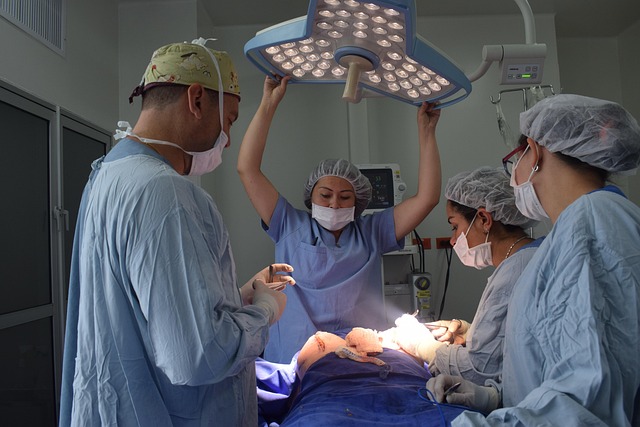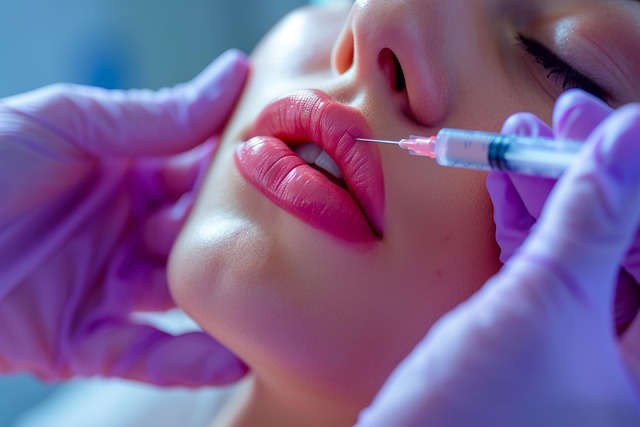In the field of plastic surgery, cosmetic surgery liability coverage is essential protection against financial risks from complications like infections, scarring, and adverse reactions. This specialized insurance safeguards surgeons and practices from medical malpractice claims, enabling them to prioritize patient care and outcomes without legal concern. With complex procedures and varying regulations, securing comprehensive cosmetic surgery liability coverage is paramount to mitigate risks, maintain financial stability, and earn patient trust. Regular policy reviews, anticipation of claim types, and best practices in patient safety are key to effective risk management.
In the realm of plastic surgery, where precision meets art, understanding the intricacies of cosmetic surgery liability coverage is paramount. This comprehensive guide delves into the essential aspects of insurance for practices, exploring key risks, legal considerations, and best safety practices. By navigating the regulatory landscape, surgeons can ensure they’re protected against potential claims. Discover how crafting robust policies, preparing for eventualities, and prioritizing patient safety mitigate risks, fostering trust in the ever-evolving cosmetic surgery industry.
- Understanding Cosmetic Surgery Liability Coverage: Why It's Essential
- Key Risks Associated with Plastic Surgical Procedures
- Crafting Comprehensive Insurance Policies for Practices
- Legal Considerations and Regulatory Landscape
- Navigating Claims: What to Expect and How to Prepare
- Best Practices for Maintaining Patient Safety and Mitigating Risk
Understanding Cosmetic Surgery Liability Coverage: Why It's Essential

In the realm of plastic surgery, where precision and skill are paramount, having adequate cosmetic surgery liability coverage is not just a legal requirement but an essential safety net for practitioners and patients alike. This type of coverage protects against potential risks and liabilities that can arise during surgical procedures, ensuring that practices can navigate any unforeseen challenges without facing financial ruin.
The importance of this coverage lies in the fact that cosmetic surgeries, ranging from aesthetic enhancements to reconstructive procedures, carry inherent risks. Complications may include infection, scarring, negative reactions to anesthesia, or unideal outcomes. Cosmetic surgery liability coverage helps mitigate these risks by providing financial protection against lawsuits and medical expenses associated with adverse events. It allows practices to focus on delivering quality care without the constant burden of potential legal repercussions.
Key Risks Associated with Plastic Surgical Procedures

Plastic surgical procedures, while aimed at enhancing appearance and restoring confidence, come with inherent risks that can have significant consequences. One of the primary concerns is infection, which can arise from sterile site contamination or the use of non-sterile equipment. Additionally, patients face the risk of complications such as bleeding, hematomas, and seroma formation, which may lead to prolonged recovery periods.
Another critical aspect is malpractice litigation, underscoring the need for robust cosmetic surgery liability coverage. Procedures like breast augmentation, rhinoplasty, and facial rejuvenation carry potential risks of asymmetry, scarring, or unsatisfactory results. These issues can trigger lawsuits if patients perceive negligence on the part of the surgeon or practice. Adequate insurance protection helps safeguard both practices and surgeons against such financial burdens.
Crafting Comprehensive Insurance Policies for Practices

In the realm of plastic surgery, where techniques range from minimally invasive to complex reconstructive procedures, ensuring adequate insurance coverage is paramount for practices and their patients. Comprehensive insurance policies should encompass a wide array of potential risks and liabilities that may arise during cosmetic surgeries. This includes medical malpractice claims related to adverse outcomes, such as infection, scarring, or anaesthetic complications. Given the highly specialised nature of plastic surgery, specific coverage for cosmetic surgery liability is crucial to protect practices from significant financial losses.
Crafting these insurance policies involves careful consideration of various scenarios, including pre-operative evaluations, surgical techniques, and post-operative care. Adequate coverage should extend beyond traditional medical malpractice provisions, addressing issues like informed consent, patient communication, and the management of expectations. By meticulously designing these policies, plastic surgery practices can safeguard their financial stability, maintain patient trust, and navigate the intricate landscape of liability with confidence.
Legal Considerations and Regulatory Landscape

In the realm of cosmetic surgery practices, understanding legal considerations and navigating the regulatory landscape is paramount for businesses aiming to ensure comprehensive protection. These practices often deal with intricate procedures that carry potential risks and responsibilities. Thus, securing suitable cosmetic surgery liability coverage becomes an indispensable aspect of risk management. Such insurance safeguards against financial loss arising from adverse outcomes or legal disputes, including medical malpractice claims.
The regulatory environment surrounding cosmetic surgeries varies across jurisdictions, but common threads include licensing requirements for practitioners, facility standards, and informed consent mandates. Staying abreast of these regulations is crucial as they can impact coverage needs. Practices must meticulously review their policies to align with current legal frameworks, ensuring compliance and adequate protection against liabilities associated with cosmetic procedures.
Navigating Claims: What to Expect and How to Prepare

Navigating Claims: What to Expect and How to Prepare
When it comes to plastic surgery practices, managing claims is an integral part of ensuring smooth operations and patient satisfaction. Cosmetic surgery liability coverage plays a pivotal role in protecting practices from potential financial burdens associated with adverse outcomes or medical mistakes. Understanding the claims process and preparing accordingly are essential steps in mitigating risks.
Practices should anticipate various types of claims, including malpractice suits related to surgical procedures, reactions to anesthesia, or post-operative complications. To prepare, it’s crucial to have comprehensive insurance policies in place that cover these scenarios. Regularly reviewing policy terms and conditions, staying updated on legal precedents, and maintaining meticulous records can significantly aid in effectively navigating claims and safeguarding the financial health of the practice.
Best Practices for Maintaining Patient Safety and Mitigating Risk

Maintaining patient safety and mitigating risks are paramount in plastic surgery practices, especially given the high-stakes nature of cosmetic procedures. Best practices include comprehensive pre-operative assessments to understand patients’ medical history, current medications, and potential allergies, which can help anticipate and manage complications. Furthermore, adhering to strict sterile procedures, utilizing state-of-the-art equipment, and ensuring a clean, certified operating facility are essential to minimize infection risks.
Regular staff training on the latest techniques and safety protocols, as well as ongoing communication with patients post-surgery, can significantly reduce malpractice claims related to cosmetic surgery liability coverage. Maintaining detailed records of patient consent forms, procedure notes, and follow-up care plans not only protect against legal issues but also enhance continuity of treatment, ultimately fostering patient trust and satisfaction.
